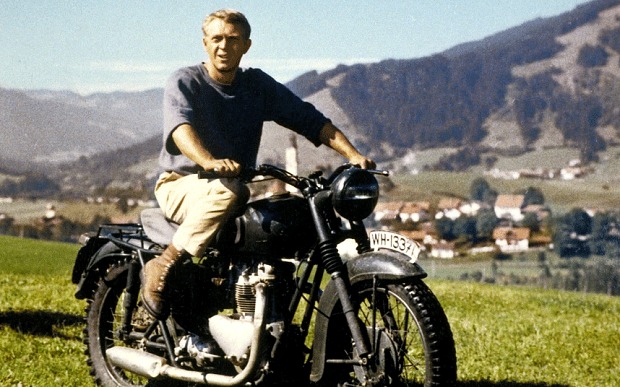The movie that almost wasn’t made has become one of the most watched World War II films of all time. The Great Escape didn’t excite many studios at the time as there were war movies being made in abundance. The storyline didn’t to fit since there was no romantic thread, much less a top line female at all. There was no penultimate conclusion where the hero confronts and destroys the villain in his lair. This was an escape story based mostly on facts, which would be a difficult sell.
Eventually United Artists and the Mirisch Company took the chance on the film and a top class group of actors was put together. This group included James Coburn, Richard Attenborough, James Garner, Donald Pleasance, Steve McQueen and Gordon Jackson.
They decided to film in Germany since there simply wasn’t anywhere else with a forest that matched those in Bavaria.
The original story was written by an Australian, Paul Brickhill who was a POW at the time but did not attempt to use the tunnels as had claustrophobia. The real camp had been in Zagan, Poland. 76 men escaped from Stalag Luft III on 24th march 1943. 50 escapees were later executed.
Much of the film follows fact in that most POW’s in the camp had been involved in preparations for the escape. Papers were forged and civilian clothing was manufactured.
Three tunnels, Tom, Dick and Harry were dug using cutlery. The tunnels went down 30 feet and had lengths up to 330 feet. The suspense in the movie only increases when the tunnel is found to be short of the forest with the escapees having to emerge in open ground where they ran the risk of being spotted from the camp. This part of the movie is also fact.
One of the most memorable parts is pure Hollywood. The motorcycle jump into barbed wire by Steve McQueen’s character didn’t actually happen, but it did add to the movie.
A stunt rider, Bud Ekins, had made the jump during filming as the insurers wouldn’t let McQueen do it himself. Another actor in the film, John Leyton, has recalled how he, Steve McQueen, Charles Bronson, and James Coburn all made the jump after filming was over. Of course this only happened following some tutoring from Bud Ekins. The barbed wire used in the movie was actually strands of rubber.
There was some friction between actors at times due to egos and different personalities. McQueen was arrested by German police more than once for his wild driving. Donald Pleasance took his Jaguar to Germany and wasn’t a slouch either.
Garner and Bronson almost came to blows at one stage and McQueen was almost sacked from the film because of his demands, The Telegraph reports.
All of this was overcome along with the financial constraints as the film was not given a large budget.
When The Great Escape was released, it didn’t get rave reviews from all corners with one critic writing, “the script would have been better for the Goons” and Time magazine saying, “it should not have been filmed in colour.”
The public had a different view. The Great Escape ended up being a great financial success matching the highest grossing films of 1963. The Great Escape has consistently screened on television for decades with millions of people being drawn in.
The lasting legacy of the Great Escape is how close to reality it is. From what really happened being shown to what it was like in a POW camp, The Great Escape shows this with a tangible element of adventure thrown in.
